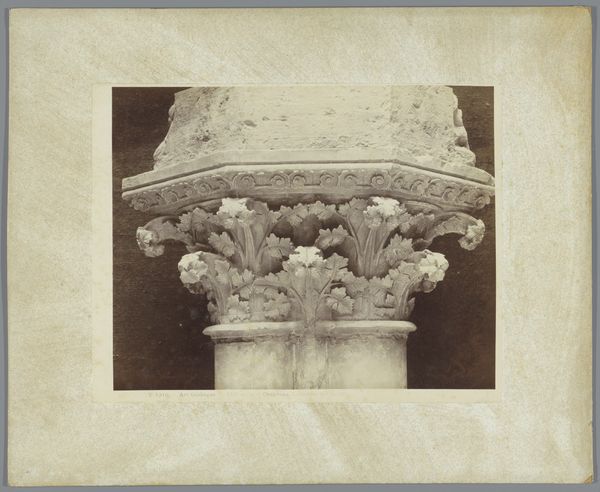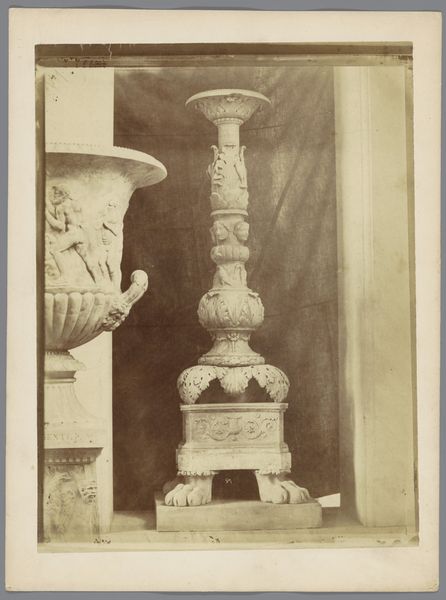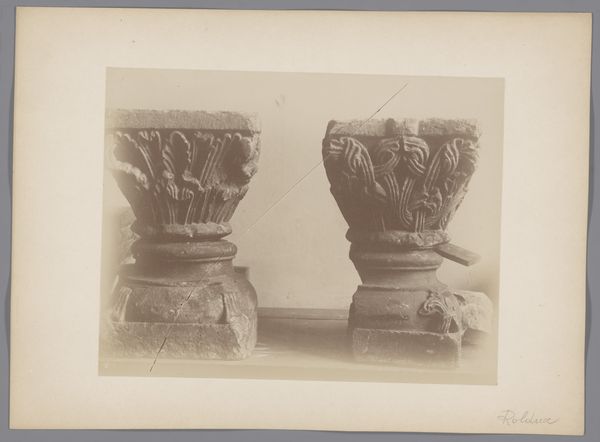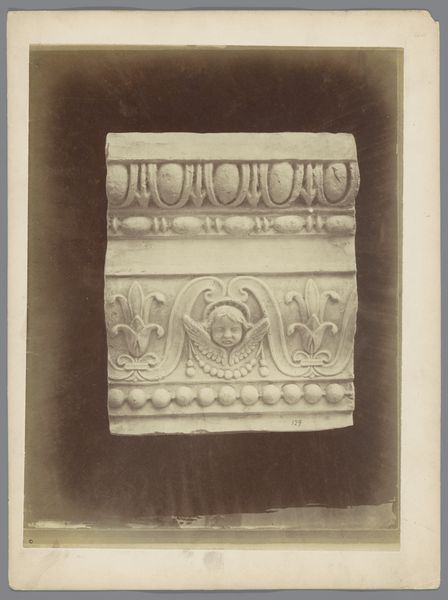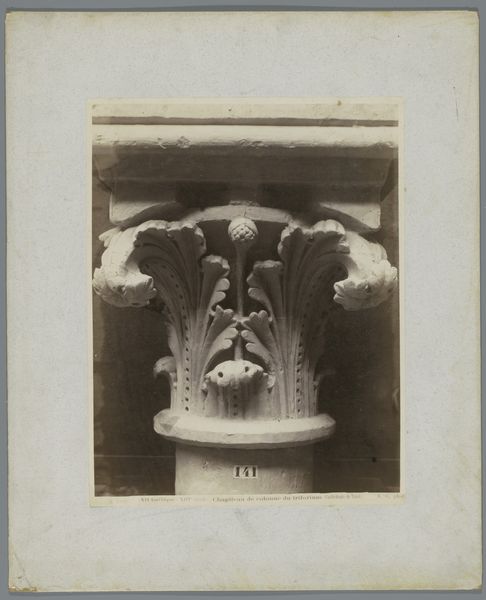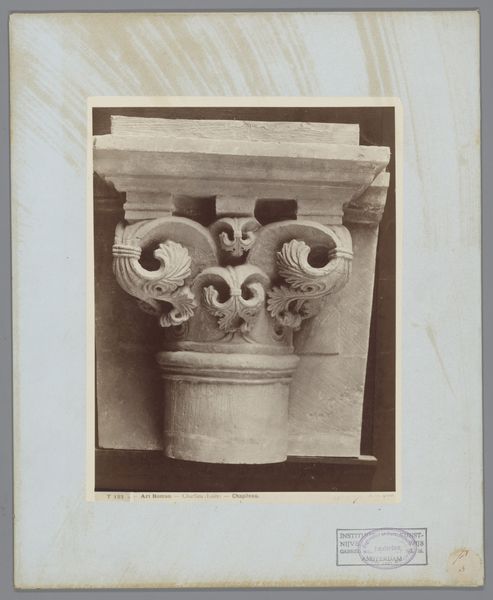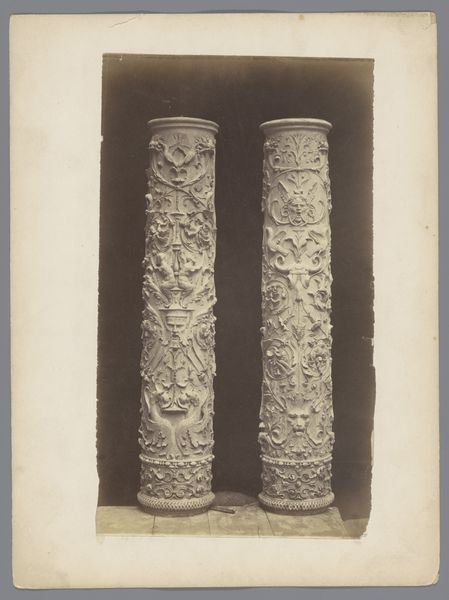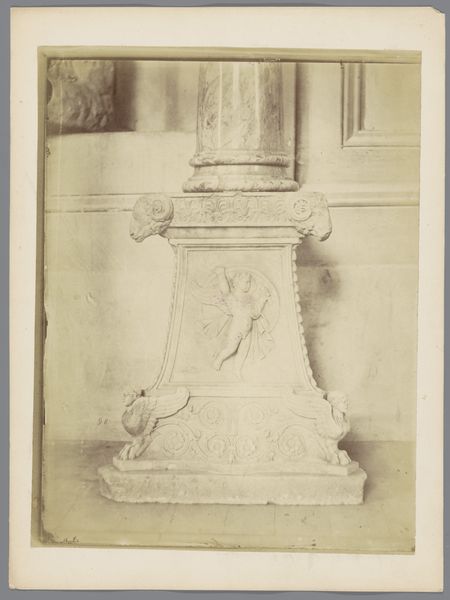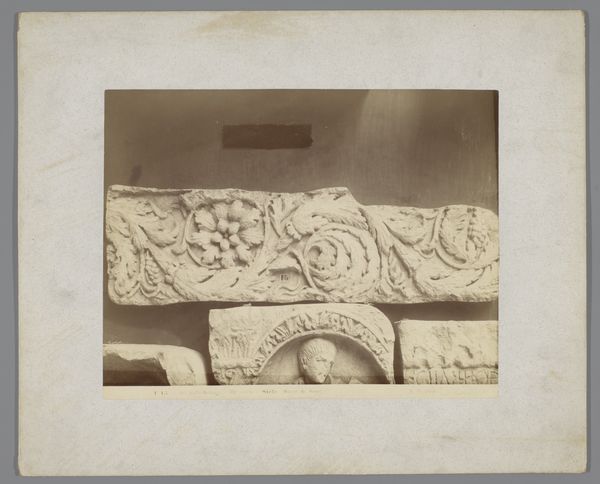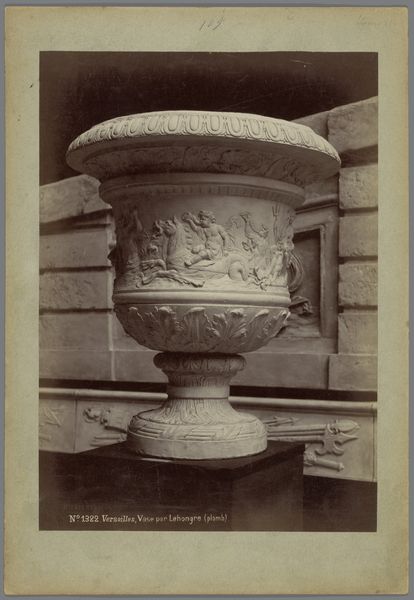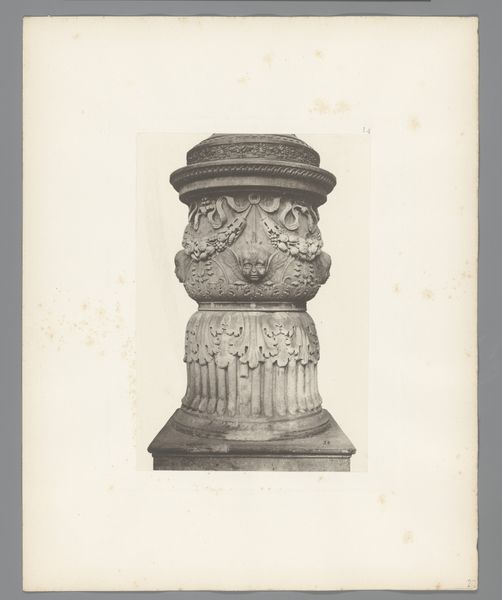
Afgietsel van een zuil met reliëf van de Kathedraal van Chartres c. 1875 - 1900
0:00
0:00
print, photography, sculpture
# print
#
sculpture
#
classical-realism
#
photography
#
geometric
#
ancient-mediterranean
#
column
#
sculpture
#
academic-art
Dimensions: height 258 mm, width 201 mm
Copyright: Rijks Museum: Open Domain
Curator: Here we have a photograph by Adolphe Giraudon, titled "Afgietsel van een zuil met reliëf van de Kathedraal van Chartres"—"Cast of a column with relief from Chartres Cathedral"—dating from around 1875 to 1900. Editor: My immediate reaction is how static yet alive it feels. It’s a classical form, but the detailed foliage carved into the column breathes life into the stone. Curator: Absolutely. Notice how Giraudon, though using the then relatively new medium of photography, is documenting an ancient art form, the column as a foundational symbol. The photograph, like a mirrored echo, transmits not just a form but its history. Editor: And that history is deliberately gendered and classed, isn't it? Cathedrals are sites of immense social power. Even this isolated fragment speaks to a hierarchy legitimized, in part, through aesthetics. Who had access, who created this… and who benefited? Curator: A crucial point. Columns in religious architecture often represent pillars of faith, strength, but they also evoke the Tree of Life. The foliage detail we see points toward a sacred grove, reminding us of pre-Christian spiritualities absorbed into the dominant religion. Editor: I’m interested in the visual echoes of pre-Christianity, but I wonder if these particular leaves gesture to something specific—oak, perhaps, associated with endurance and knowledge? It raises the question: whose knowledge is being preserved and valued here? The Cathedral stood on ground already layered with significance. Curator: Yes, the leaves could be indicators of cultural memory. This becomes even more apparent with the consideration that light, in gothic cathedrals, represented divine intellect, illuminating the structure. In the context of this photo, light almost feels like a form of revelation, hinting towards inherent cultural knowledge. Editor: Which makes Giraudon's role as a photographer all the more important. He captures, freezes, and redistributes this fragment. But even as it preserves the past, photography always acts as a lens through which the past is presented, filtered with layers of choices and socio-political narratives. Curator: So it appears we can say that beyond the classical reference points, this image serves as a powerful mnemonic device, bridging both pagan and Christian beliefs, a relic mediated by a modern medium, the photograph. Editor: Indeed. A beautiful, somewhat haunting, artifact made and remade through layers of history and cultural appropriation. It begs us to examine whose stories, voices, and symbols echo most loudly in the present, and perhaps, who we should listen to next.
Comments
No comments
Be the first to comment and join the conversation on the ultimate creative platform.

